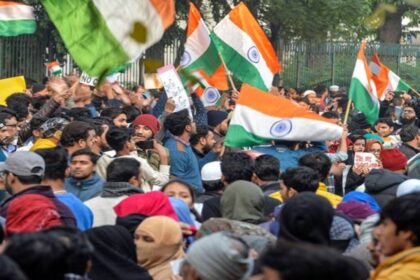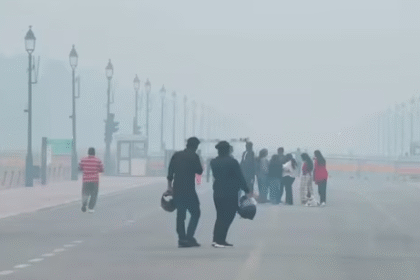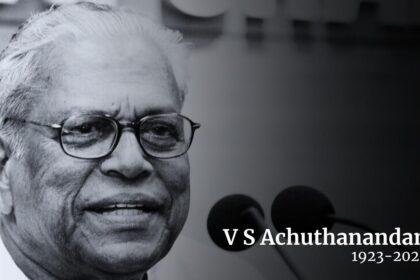Mumbai’s Heartbeat in Concrete and Chaos – Why Market Redevelopment Is No Longer Optional
The markets of Mumbai are more than just commercial centres—they are living, breathing ecosystems, stitched into the cultural and economic fabric of the city. From the winding alleys of Dharavi, pulsing with informal commerce and industrious zeal, to the colonial-era Crawford Market, echoing with stories of pre-Independence trade, these marketplaces have defined the spirit of a city that never sleeps. But now, as time has worn down their physical infrastructure and capacity to sustain modern demands, the call for their redevelopment has moved from discussion tables to action plans.
The Brihanmumbai Municipal Corporation (BMC), India’s richest municipal body, has formally announced its intention to initiate the redevelopment of several key markets across Mumbai. This includes some of the city’s oldest and busiest markets such as Dharavi’s commercial zones, Crawford Market in South Mumbai, and parts of Dadar, Kurla, and Byculla. With swelling population density, unplanned expansion, and urgent safety concerns haunting these urban landmarks, the proposed overhauls mark a critical turning point in the city’s evolution.
The Redevelopment Push: A Civic Imperative
At the heart of this initiative is the BMC’s acknowledgment that many of Mumbai’s key markets have become structurally unfit and functionally outdated. What were once spaces designed to cater to a fraction of the current population are now overburdened, congested, and vulnerable to disasters—be it fire, collapse, or disease outbreaks. According to a senior BMC official, the redevelopment will not only modernize these marketplaces with improved infrastructure, sanitation, and fire safety systems but also ensure the continuation of livelihoods by re-accommodating existing vendors and shopkeepers.
A detailed civic audit conducted last year flagged over 20 markets under BMC’s jurisdiction as “structurally dilapidated,” with many lacking proper waste disposal systems, ventilation, and emergency exits. The redevelopment will follow a Public-Private Partnership (PPP) model to ensure funding and fast-tracking. Several architectural proposals have already been floated, with an emphasis on preserving the heritage look of older structures like Crawford Market while enabling a 21st-century retail experience.
Dharavi: From Informality to Integrated Economy
Dharavi, often mischaracterized as just a slum, is in fact one of Asia’s largest informal economic hubs. With thousands of leather manufacturers, potters, recyclers, and food processors operating within its narrow lanes, the redevelopment plan aims to carve out formal retail corridors, establish legal frameworks for tenancy, and introduce zoning discipline.
In its present form, Dharavi’s informal economy is both its strength and Achilles’ heel—creating employment and wealth but operating in legal gray zones with inadequate civic services. The BMC’s market redevelopment, when coupled with the broader Dharavi Redevelopment Project (DRP), is expected to create a regulated yet inclusive environment for micro-enterprises to thrive. However, community resistance remains a challenge, with many fearing displacement and loss of identity.
Crawford Market: Balancing Heritage with Modernity
Meanwhile, in South Mumbai, Crawford Market—renamed Mahatma Jyotiba Phule Mandai—remains a heritage gem. Originally built in 1869, its Gothic architecture and carved facades are iconic, but its interiors are plagued with overcrowded stalls, leaking roofs, and unhygienic conditions.
BMC’s vision for Crawford Market includes structural restoration of the building façade under supervision from the Mumbai Heritage Conservation Committee (MHCC), coupled with redevelopment of the adjoining vendor areas into multi-storey, air-ventilated zones. Cold storage facilities, digital kiosks, solid waste management units, and loading bays are some of the infrastructure upgrades being proposed.
The Political Dimension: A Pre-Election Narrative
There is also a political current underlining these civic moves. With municipal elections in the pipeline, the ruling Shiv Sena-led civic body is keen to project these redevelopment drives as evidence of good governance and long-term vision. Opposition parties, however, accuse the BMC of rushing announcements for electoral gains without taking vendors into full confidence or presenting a clear rehabilitation blueprint.
In previous redevelopment projects—like the Santacruz and Dadar markets—allegations of unfair allotment, delays, and contractor-favoritism had marred execution. The BMC has responded to these concerns by promising third-party audits, vendor representation committees, and transparent bidding for developers.
While the Brihanmumbai Municipal Corporation (BMC) outlines grand plans for modernising key market zones across Mumbai, the voice of the people most affected—vendors, hawkers, small shopkeepers, and labourers—rings with uncertainty, tempered with guarded optimism. For many, these markets are not merely places of business. They are homes, heritage, and lifelines rolled into one.
Ground Realities: Traders on the Edge
Across the sprawling labyrinths of Dharavi, the narrow stone paths of Crawford, and the tightly packed commercial quarters of Dadar and Kurla, the sentiment among market traders is mixed. On the one hand, there is cautious enthusiasm for cleaner, safer, more spacious work environments. On the other, there’s deep apprehension about what the future holds.
“I was born behind this fruit stall. It’s been in our family for over 50 years. If they redevelop the place, will I get it back? Or will I just be given a flat somewhere I can’t afford to run my business from?” says Yusuf Khan, a vendor at Dadar Market. His concern is echoed across dozens of other traders, many of whom have faced broken promises in the past.
Some of their fears are not unfounded. Earlier market redevelopments in places like Kalbadevi and Chembur saw significant delays, with vendors either being compensated inadequately or not at all. Others were shifted to temporary spaces with no proper infrastructure, only to be left there for years.
The Struggle for Legal Recognition
A major obstacle for many vendors is their legal status. Not all hawkers or shopkeepers have formal licences or tenancy papers. This makes them vulnerable during redevelopment drives, often disqualifying them from rightful compensation or rehabilitation.
In the case of Dharavi, for instance, thousands of micro-industrial units operate without formal registration, often in shared or rented spaces that have no defined ownership. Without a clear list of “eligible beneficiaries,” the risk of erasure from redevelopment plans is real.
To address this, the BMC has announced that biometric surveys and digital vendor registration drives will be undertaken before any demolition or reconstruction begins. However, critics point out that such exercises have often been flawed or manipulated in the past, leading to long legal disputes.
The Slippery Slope of ‘Rehabilitation’
Rehabilitation is a complex term in the Mumbai redevelopment context. While authorities may announce that all existing stakeholders will be “accommodated,” the details often reveal otherwise.
Space allotment is rarely equivalent to what was lost. The vertical realignment of markets—moving vendors from open-air ground floors to enclosed higher levels—often leads to a dramatic drop in customer footfall. Poor design, inadequate ventilation, lack of signage, and poor access frequently render new spaces commercially unviable.
“The shops become pigeonholes in concrete towers. Who will come to the third floor of a market building to buy bananas or plastic buckets?” asks Radha Salvi, a market worker from Kurla. For many vendors, being moved off the ground level equals economic extinction.
Balancing Vision with Social Equity
Urban planners and architects argue that market redevelopment is not inherently flawed but must be implemented with sensitivity, transparency, and equity. This means respecting the social and economic networks already in place, ensuring stakeholder consultations, and guaranteeing secure tenure.
In cities like Bangkok and Nairobi, where market upgrades have been successfully implemented, authorities adopted inclusive planning processes. They provided long-term leases, rent-free periods during transition, and allowed vendors to participate in the design of the new spaces. Seoul’s Dongdaemun Market project even set aside temporary spaces that replicated the original vendor layout to retain customer loyalty.
Mumbai, however, has often adopted a top-down approach. Vendors are typically informed after tenders are floated and designs finalised. The BMC now claims this will change. It has promised to establish Vendor Advisory Committees to consult on layout, amenities, and phasing of redevelopment. If this is truly followed, it could mark a much-needed shift in Mumbai’s redevelopment culture.
Environmental, Social, and Cultural Concerns
Beyond the economics and legality, there’s the emotional and cultural loss. Crawford Market isn’t just an old building—it’s a monument to Mumbai’s commercial heritage. Dharavi isn’t merely a slum—it’s a global symbol of informal resilience and entrepreneurial grit.
Urban anthropologists warn that redevelopment must not sterilise what makes these spaces vibrant. “You can’t erase colour, sound, and chaos in the name of order,” notes Dr. Aarti Subramanian, who studies public markets. “Markets are sensory spaces—redevelopment must preserve their soul, not just upgrade the ceiling.”
Environmentally, too, there are concerns. Redevelopment often brings with it increased concrete load, reduced tree cover, and excessive air-conditioning. A more sustainable model would include solar panels, rainwater harvesting, greywater reuse, natural light, and passive cooling—features not yet prominent in current BMC blueprints.
Redevelopment is not just about demolishing old buildings and constructing new ones. It is a complex exercise in urban transformation that demands intricate planning, transparent execution, and sensitive stakeholder engagement. For the Brihanmumbai Municipal Corporation (BMC), the redevelopment of Mumbai’s key markets represents not only a civic infrastructure initiative but also a test of its ability to balance growth with justice.
The Administrative Machinery and Institutional Workflow
At the administrative core of the project lies a multi-tiered coordination mechanism involving BMC’s Development Plan (DP) Department, the Market and Encroachment Control Department, the Slum Rehabilitation Authority (SRA), and, in some cases, the Mumbai Metropolitan Region Development Authority (MMRDA). These bodies must work in tandem to clear legal hurdles, prepare architectural plans, obtain clearances, and allocate funds.
Each market zone—be it Dharavi, Kurla, or Crawford—has been mapped under a separate redevelopment brief. BMC has designated nodal officers for each cluster, who will act as the primary liaison between contractors, local elected representatives, and the community.
To streamline progress, a Redevelopment Monitoring Cell is also being formed, tasked with real-time updates, grievance redressal, and public communication. A senior BMC official noted that weekly progress reports will be made available online to “ensure complete transparency.”
Funding the Transformation: Public-Private Partnerships and CSR Models
One of the most crucial aspects of this massive undertaking is finance. The redevelopment of major markets—many in dense, high-value real estate zones—is estimated to cost several thousand crores. The BMC plans to implement the projects through Public-Private Partnership (PPP) models where viable.
Under the PPP framework, a private builder or consortium will be given the right to develop commercial or residential floors above the market levels in exchange for constructing the new market infrastructure at no cost to the civic body. This “incentivised development” is attractive for builders, especially in premium locations like Crawford Market and Cuffe Parade.
In less commercially attractive areas such as parts of Dharavi and Kurla, the BMC may directly fund the redevelopment using internal resources or municipal bonds. Some corporate entities have also expressed willingness to contribute under their Corporate Social Responsibility (CSR) obligations, particularly for restoring heritage markets or creating green commercial spaces.
However, transparency in PPP agreements is critical. Experts have pointed out past instances where developers diverted from approved plans or delayed rehabilitation. As a preventive measure, BMC has stated that all future contracts will include clauses mandating time-bound construction, monthly audits, and escrow-based disbursement mechanisms.
Architectural Design and Spatial Planning
The design of Mumbai’s future markets will be crucial to their long-term success. While the old markets grew organically over decades, the new structures must be designed to meet 21st-century needs while preserving traditional market characteristics.
To this end, BMC has onboarded renowned architects and urban planners to draft blueprints that combine functionality, sustainability, and local character. These designs must accommodate:
- Clearly demarcated spaces for vendors
- Sufficient width for pedestrian movement and goods transport
- Natural light and ventilation
- Accessibility for differently-abled persons
- Waste management systems and drainage
- Provision for cold storage and fire safety
For heritage markets such as Crawford, CSMT Flower Market, and Null Bazaar, conservation architects will work to preserve aesthetic elements like domes, arches, stone columns, and historical murals.
Temporary Relocation – A Logistical Challenge
Perhaps one of the toughest phases of the redevelopment will be the temporary relocation of vendors during construction. This is a sensitive task as most markets are fully functional, and disruption to business can impact thousands of livelihoods.
BMC plans to create interim market zones on nearby municipal plots or in modular prefabricated structures. Vendors will be allotted temporary stalls through a lottery system, and basic amenities like toilets, electricity, and water supply will be ensured.
Yet, in the past, such temporary shifts have led to severe losses for traders due to reduced customer footfall. In response, civic officials have pledged to provide marketing and promotional support for temporary markets through social media, hoardings, and collaborations with delivery platforms like Dunzo and Zomato.
Technology and Digitisation: Bringing Markets into the Modern Era
Another key innovation in this redevelopment drive is the emphasis on digitisation. BMC aims to provide each vendor with a Unique Market Identification Code (UMIC) linked to Aadhaar or PAN. This will allow for seamless allotment, tracking of rehabilitation status, and access to vendor-specific schemes.
Moreover, new markets will feature:
- Free Wi-Fi zones
- CCTV-based surveillance and smart lighting
- QR-based stall mapping for e-commerce integration
- Digital noticeboards for communication
- Fire-safety monitoring systems
The long-term goal is to transform Mumbai’s traditional markets into hybrid retail ecosystems where the charm of in-person interaction is supported by the convenience of digital services.
The Road Ahead
As blueprints become tenders and tenders become construction sites, Mumbai stands at a defining juncture in its urban history. The redevelopment of its markets is more than a civic facelift—it’s a statement of how the city treats its working class, preserves its heritage, and prepares for future challenges.
But challenges are many: from litigation by tenants to political pressures, environmental hurdles, and civic resistance. Whether the BMC can successfully navigate these while delivering a model of participatory redevelopment remains to be seen.
Every ambitious public infrastructure project in India must navigate a thicket of institutional, legal, political, and ecological complications—and the Brihanmumbai Municipal Corporation’s (BMC) plan to redevelop major markets in Mumbai is no exception. While blueprints and promises often generate initial enthusiasm, the execution phase quickly reveals the complex terrain that lies beneath.
In this part, we uncover the critical roadblocks that threaten to derail, delay, or dilute the redevelopment process—and analyze how each can be turned into an opportunity with foresight, dialogue, and commitment.
Legal Quagmires: Who Owns What, and Who Has the Right to Stay?
At the heart of several disputes surrounding the markets slated for redevelopment lies a deceptively simple question: Who owns the land? In many cases, the land beneath these markets belongs to the BMC, but long-standing tenancy, subletting, encroachments, and undocumented leases have turned legal clarity into a fog.
Examples of legal friction include:
- Crawford Market: Several traders here claim “perpetual lease rights” dating back to pre-independence agreements. These claims are now the subject of petitions in the Bombay High Court.
- Kurla and Dharavi Markets: A number of vendors operate from “pattas” (temporary occupation rights) issued decades ago but never regularized, raising questions about their eligibility for permanent rehabilitation.
- Slum encroachments near markets: Areas like Cuffe Parade and Byculla see overlap between market areas and informal housing, leading to conflicts between the Slum Rehabilitation Authority (SRA) and BMC over jurisdiction.
These issues slow down land acquisition, delay tenders, and often lead to litigation paralysis, especially when large associations of vendors band together to resist displacement.
Legal experts stress the importance of a pre-redevelopment legal audit of each market zone. This would include title verification, tenant mapping, and dispute tracking—ensuring smoother implementation down the line.
Political Pressures: Between Welfare and Vote Banks
Redevelopment is never politically neutral. Market vendors, many of whom are voters and small-time financiers for local political outfits, represent a critical mass in every municipal and assembly constituency.
As a result, local corporators, MLAs, and political parties often step in to either delay, re-route, or bargain over redevelopment plans. This political interference can manifest in multiple ways:
- Pressuring BMC to include “non-eligible” vendors in rehabilitation lists
- Opposing PPP models over fears of builder dominance
- Instigating mass protests or dharnas to delay demolition notices
- Demanding contracts be awarded to politically affiliated contractors
Moreover, election years magnify this sensitivity. With the BMC polls and Maharashtra assembly elections due soon, the redevelopment drive risks becoming politicized, with parties accusing one another of either “favoring builders” or “stalling infrastructure progress.”
To minimize political sabotage, BMC has proposed forming multi-party market redevelopment committees, where all stakeholders—from corporators to trade union leaders—are included in consultative roles. Transparency in vendor eligibility, lottery mechanisms, and fund allocations is being emphasized to pre-empt charges of bias.
Ecological Concerns: The Missing Link in Urban Policy
One of the most underreported challenges in Mumbai’s market redevelopment narrative is its environmental footprint. Many of the targeted markets lie in low-lying or ecologically sensitive areas:
- Kurla and Sion markets are close to flood-prone Mithi River zones
- Crawford Market is near heritage conservation precincts that require environmental clearance
- Byculla and Kalbadevi markets are embedded in densely populated zones with minimal open space
These locations raise several environmental red flags:
- Waste Management: Markets generate massive quantities of biodegradable and plastic waste, and without eco-sensitive planning, new complexes may worsen the problem.
- Heat Island Effect: Replacing older low-rise markets with concrete high-rises could trap heat in surrounding zones, impacting microclimates.
- Tree Felling: Several of the areas marked for redevelopment house old banyan or peepal trees that are either protected or require BMC Tree Authority approval for removal.
To address this, environmentalists are urging BMC to include Environmental Impact Assessments (EIA) for each major market project—especially those exceeding a certain land footprint. Green certifications (like GRIHA and IGBC), rooftop solar panels, compost pits, and rainwater harvesting systems are being pitched as baseline norms.
The BMC has so far indicated a willingness to work with NGOs and the Maharashtra Pollution Control Board (MPCB), but activists demand legally binding commitments, not just policy promises.
Human Impact: Livelihoods in Transition
Redevelopment plans often speak the language of architecture, budgets, and blueprints—but forget the most important stakeholders: people.
For over 2 lakh vendors and workers—many of whom belong to marginalized communities or are first-generation entrepreneurs—the redevelopment drive is not an upgrade, but a survival test.
Common fears include:
- Loss of customers during relocation
- Shrinking stall sizes in new structures
- Rising maintenance costs post redevelopment
- Increased surveillance and regulation limiting traditional selling practices
- Disqualification based on documentation gaps or “cut-off dates”
Recognizing these concerns, civil society groups have demanded the adoption of a Livelihood Impact Assessment (LIA)—similar to social audits for large infrastructure projects. This would evaluate how redevelopment affects income, access, food security, and community ties.
BMC has responded by promising free legal aid desks in key markets, documentation camps to help vendors regularize their status, and rehabilitation literacy programs to ensure that every affected party understands their rights.
Crossroads of Promise and Pitfall
Mumbai’s market redevelopment drive, while visionary in its urban goals, now finds itself entangled in a web of challenges—each demanding not just bureaucratic efficiency but ethical governance, public trust, and political will.
The success of this initiative will ultimately depend on whether the BMC can navigate these complexities without compromising on inclusivity, environmental sustainability, and institutional transparency.
Also Read : Trump’s Tariff Threats Strain Longstanding U.S.-South Korea Economic Ties







